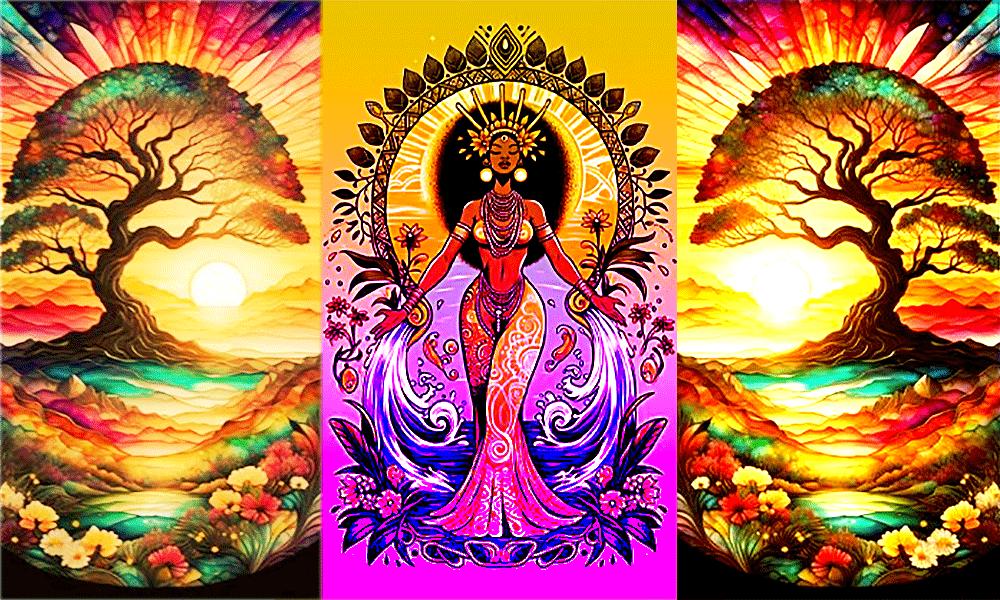 The Great Goddess on Veda, the tree Yggdrasil on Edda, and the big Sun of Hyperborea
The Great Goddess on Veda, the tree Yggdrasil on Edda, and the big Sun of Hyperborea
Still on the trail of our origins, I return to the mystery of Hyperborea, the legendary land of the North Pole. An Indian scholar, Tilak, has published a major, well-documented book. His thesis, however, is debatable. Taking up the major points of this text, I’ll show how his arguments serve my own hypothesis wonderfully, and how their flaws do a disservice to his own.
Written in prison
In the final years of the 19th century, the Indian scholar Lokamanya Bâl Gangâdhar Tilak was preparing a landmark book. At the time, Tilak was in prison in his own country: Eternal India was under British rule. The reasons for Tilak’s imprisonment were ridiculous: racialist and moronic. The British colonial power had not stopped at injustice.
In 1903, Tilak was free to publish his major work, The Artic Home in the Vedas.
The Vedas are very ancient works. For European authors, the first texts of the Vedic tradition are thought to have been composed from the 15th century B.C.E. Indian authors propose an earlier dating based on the drying up of the main river, the Sarasvatî, which dried up in 1900 B.C.E. (source) The first Veda would therefore date back some 4,000 years.
The man of the future is the one who will have the longest memory.
Our polar origins
Tilak’s thesis can be summed up in one sentence: the origin of Vedic civilization lies in the Arctic, very close to the North Pole. He came to this conclusion after studying the countless pages of the original Vedas, line by line, word by word. He is not the first to put forward this thesis.
In the introduction to his book, he cites Dr Warren and his Paradise Found or The Craddle of the Human Race at the North Pole, Tilak states that “Dr. Warren attempted to interpret ancient myths with the aid of modern discoveries, and came to the conclusion that the origin of all mankind must be sought in regions near the North Pole.” (source)LBG Tilak, The Artic Home in the Vedas, p.29
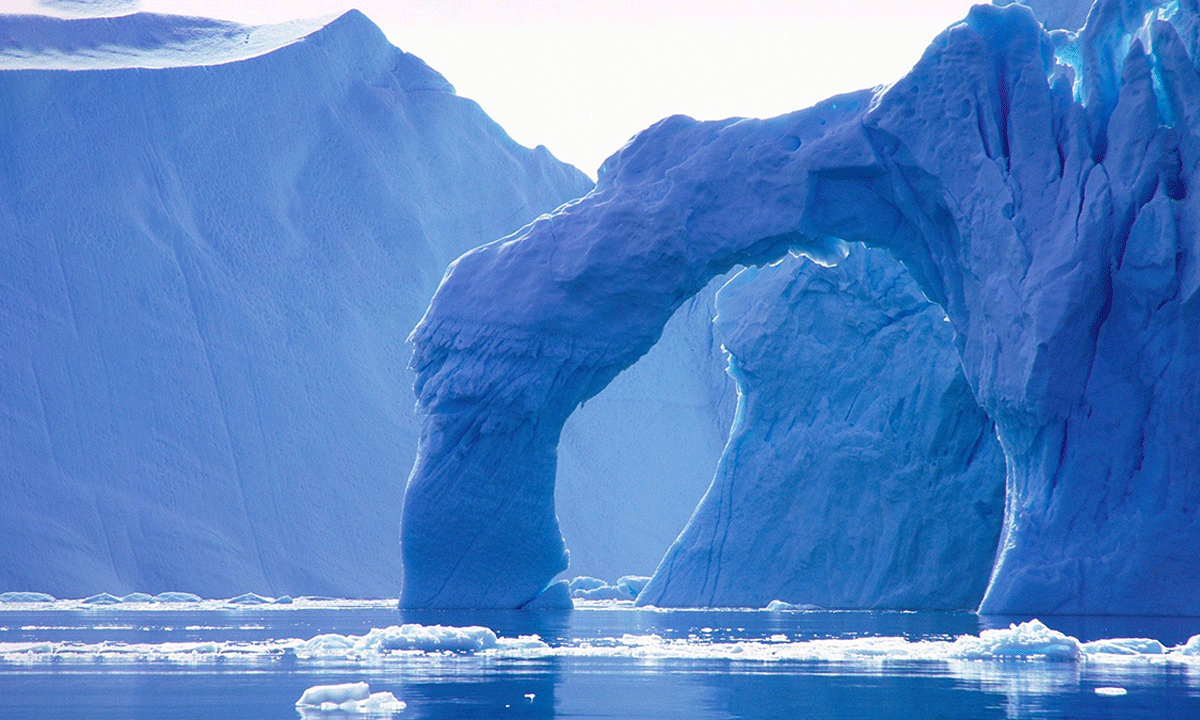
A critical examination
These eminent scholars have vied with each other in their erudition, and I feel very small beside them. Leaving aside Warren’s work, I propose to take you through the scholar Tilak’s itinerary page by page, line by line, word by word if need be.
And I’m sure you’ll agree that this treasure trove of erudition confirms in every respect the thesis I develop in detail on this site: everything begins at the North Pole. And Plato adds: the gods came from Hyperborea.
In two radically different ways, Plato, Warren, Tilak and myself confirm this polar origin. One day, it will have to be widely recognized. It’s not going to happen overnight – perhaps the day before?
We can dream, we must dream. In many ways, dreams are more real than our cardboard reality. Virtual as all get-out, it’s no more than an aquarium set, where we goldfish blow bubbles in our fishbowl.
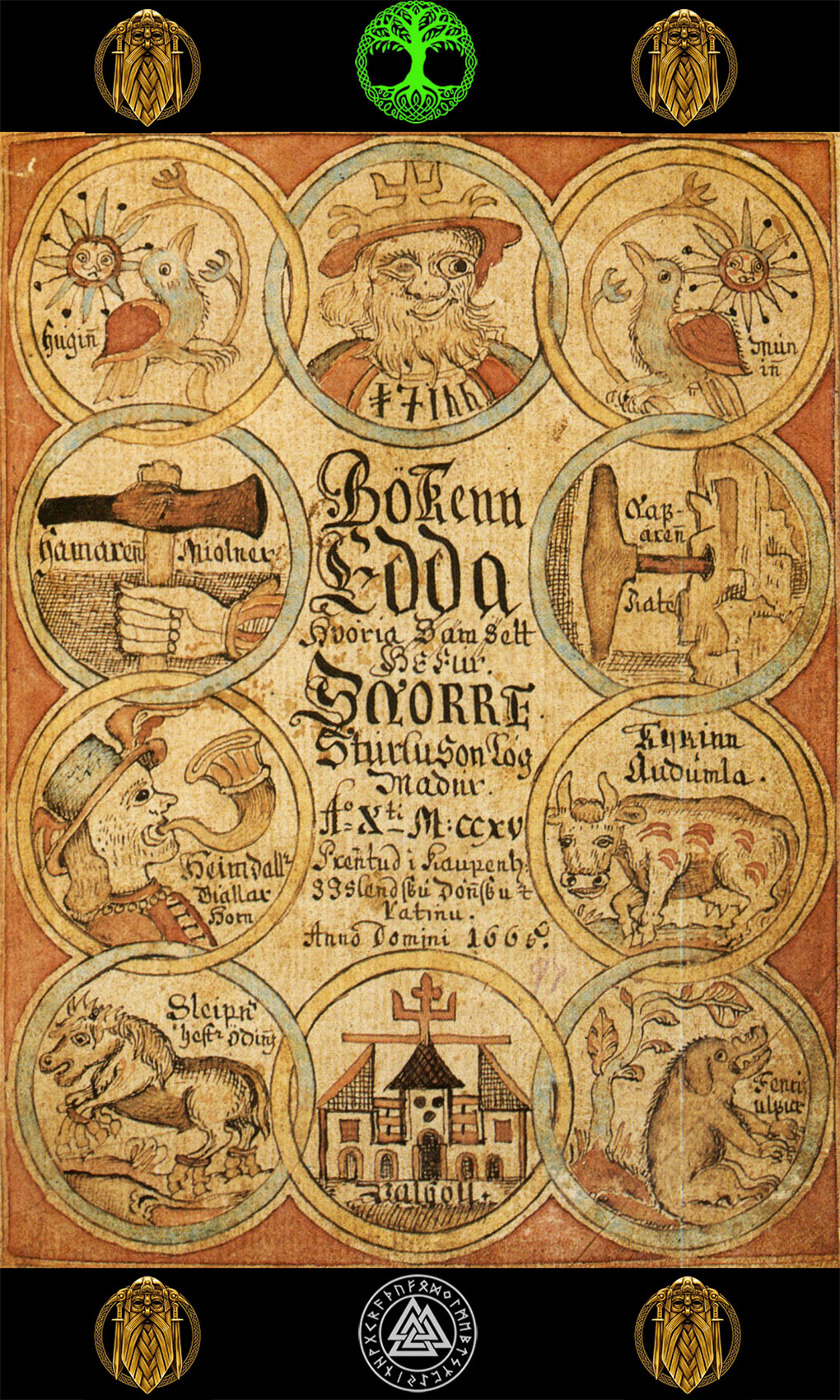 Mysterious mountain
Mysterious mountain
However, while our analysis of the facts and texts converge, we don’t come to the same conclusions.
Tilak enumerates an impressive list of proofs which clearly show that this Vedic civilization, reputed to be the oldest, developed at the North Pole.
Taking up this evidence, I agree with him, but ask him these post-mortem questions: how could an opulent, scientific, erudite civilization have developed on Arctic ice?
And why choose one of the most uninhabitable places on earth to establish this civilization?
Let me add this killer question: what happened to the mysterious “mountain of the north” that the Veda calls Mount Meru?
All Asian mythologies – from Iran, India, China, Indonesia, Korea, Japan, etc. – mention this imposing mountain located at the North Pole.
Norse mythology, notably the Edda, also mentions a mountain in the far north, but the Norse saga places greater emphasis on the world tree, Yggdrasil, which sinks its roots into the planet and whose branches touch the sky.
Readers will have noticed the similarity between the Vedas studied by Tilak and the Edda, the major mythological work of the peoples of far northern Europe. I don’t believe in coincidence or chance. This resemblance seems to indicate a real convergence.
Mount Meru
“Lord of the Mountains,” writes Tilak, “Mount Meru is identified with the North Pole. “By its brilliance, the mountain triumphs over darkness, so that night can hardly be distinguished from day.” (source)(source)LBG Tilak, The Artic Home in the Vedas, p.74
Interesting. How does this “mountain” triumph over darkness? My answer is simple: the mountain is illuminated by an artificial light. Iranian mythology comes to my rescue. Ahura Mazda meets Yima, the first king of men, in Airyana Vaêjo, the Iranian paradise. As Yima is astonished by the brilliant light, Ahura Mazda explains that there are uncreated, i.e. natural, lights and other created, i.e. artificial, lights. (source)LBG Tilak, The Artic Home in the Vedas, p.76
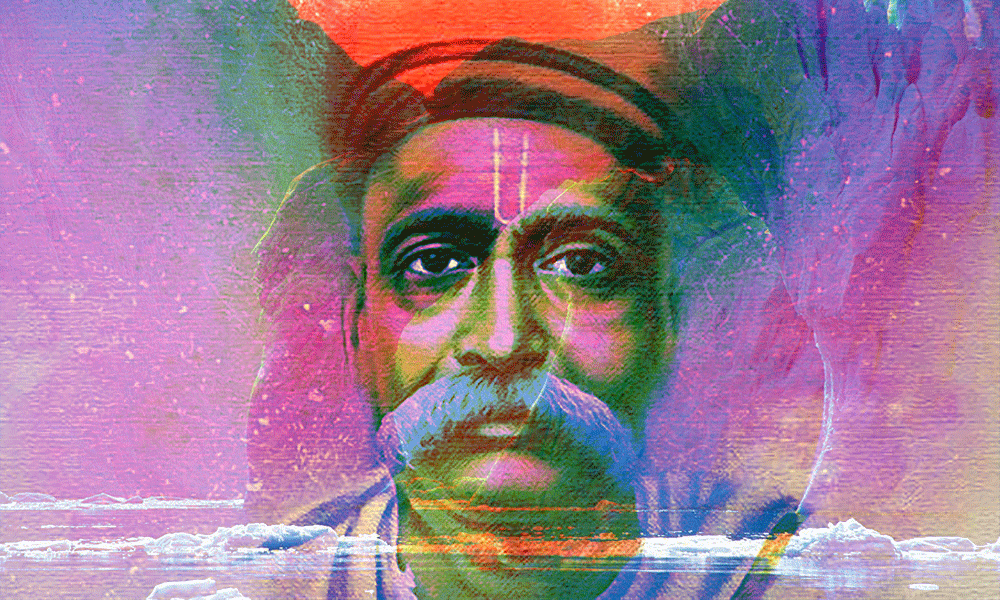 The Indien scholar Lokamanya Bâl Gangâdhar Tilak, author of the book ‘The Artic Home in the Vedas’
The Indien scholar Lokamanya Bâl Gangâdhar Tilak, author of the book ‘The Artic Home in the Vedas’
Son of the Sun
Well, we can be even clearer. In the Taittiriya Samitha, we read: “The Ekashtaka, shining with holy fervor, gave birth to a child, the great Indra. Through him the Gods defeated their enemies. Through his powers he became the one who killed the Asuras”. (source) Taittiriya Samitha IV,3,11-verse 8
So then Indra, another name of the sun, would have been born of the shining Ekashtaka, that is, of Hyperborea. You gave me a companion. (source) Taittiriya Samitha IV,3,11-verse 9 It is the sun that speaks, and this new companion is Indra.
And further: You do not oppose each other. (source) Taittiriya Samitha IV,3,11-verse 9 The sun and its new companion, Indra, are in harmony. They do not compete.
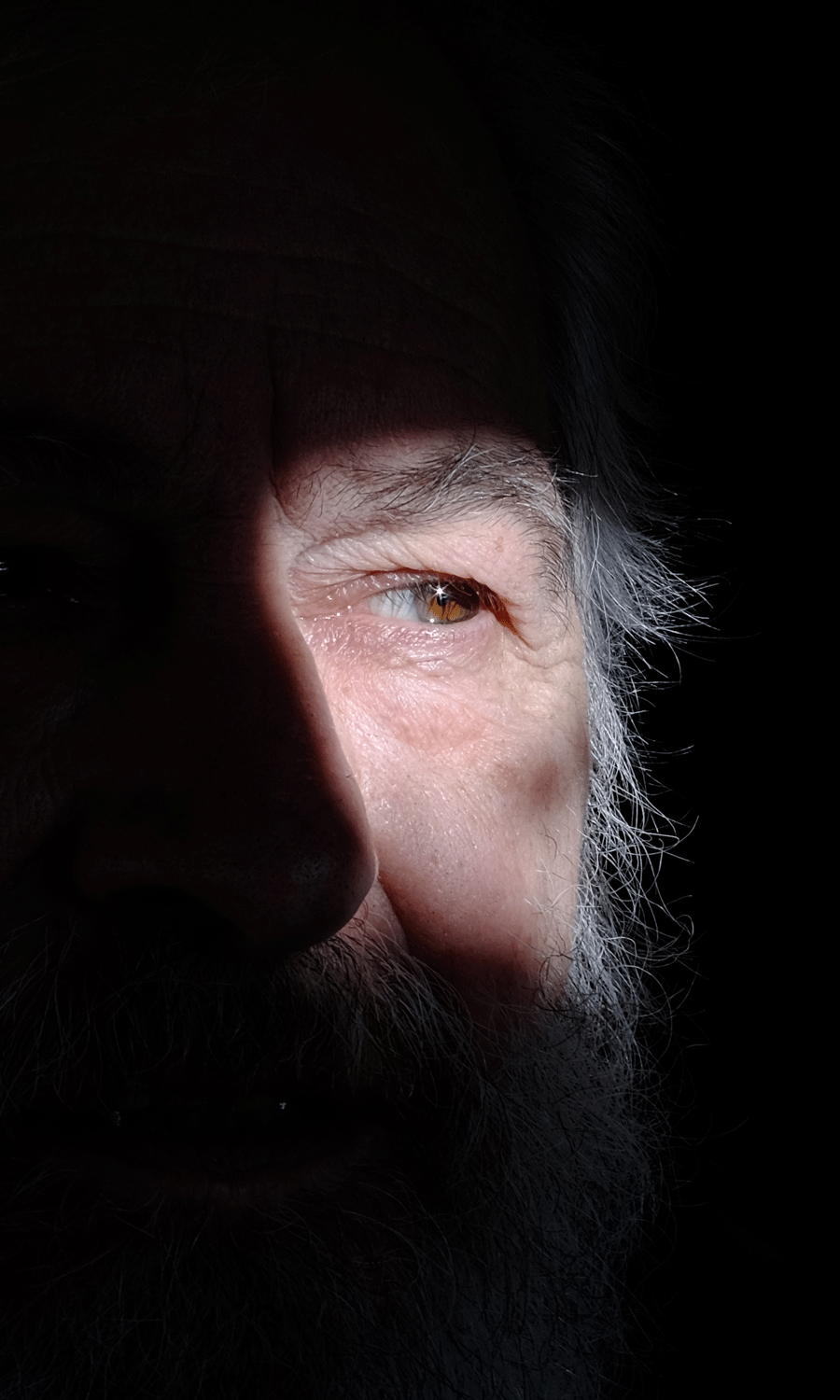 Indra is presented here as the Son of the Sun, and sometimes as this Sun itself. I have explained elsewhere what is meant by this divine title Son of the Sun that is found in all archaic cultures.
Indra is presented here as the Son of the Sun, and sometimes as this Sun itself. I have explained elsewhere what is meant by this divine title Son of the Sun that is found in all archaic cultures.
In the Vedas, Indra-born-of-the-Sun cannot designate the star of the day, as hitherto believed. How could Indra have been born or come out of the sun? This uppercase Sun designates our hyper-luminous vessel. I hear Hindu specialists tumbling from their chairs.
Yes, I persist and sign:
Indra is Hyperborea, the god who comes to help humans.
Cosmogony
Faced with the many overlappings that occur in the various legendary, I wanted to write this saga of Eden. It is the story of our origins, our present and our future. A new cosmogony, I might say in all immodesty.
A cosmogony is a mythological story that describes or explains the formation of the World. The word comes from the Greek cosmo- «world» and gon- «generate». In this, cosmogony differs from cosmology, which is the scientific study of the origin of the world and the universe and especially the laws that govern them, says Wikipedia.
The mother ship Hyperborea
For my new readers, here is a summary of my thesis. We were created by aliens whom the ancients believed to be divine. These highly evolved beings designed us in their genetic labs. An advanced alien civilization created the first Adam in a gigantic mother ship, hovering above the North Pole.
In my opinion, we are the fruit of an evolution close to that described by Darwin, but at different moments of this evolution, geneticists intervened on the genome. This explains the many missing links of Darwinism.
The Greeks and Romans called this flying island Hyperborea, which translates above the North Pole. And Plato has this bewildering phrase: “The gods came from Hyperborea”. He also speaks of an island in the sky and an aerial temple. Plato describes Hyperborea as a circular island divided into four districts, the four northern islands mentioned in the Edda. In the center there is a high mountain, the Olympus of the Greeks, Mount Meru of the Indians.
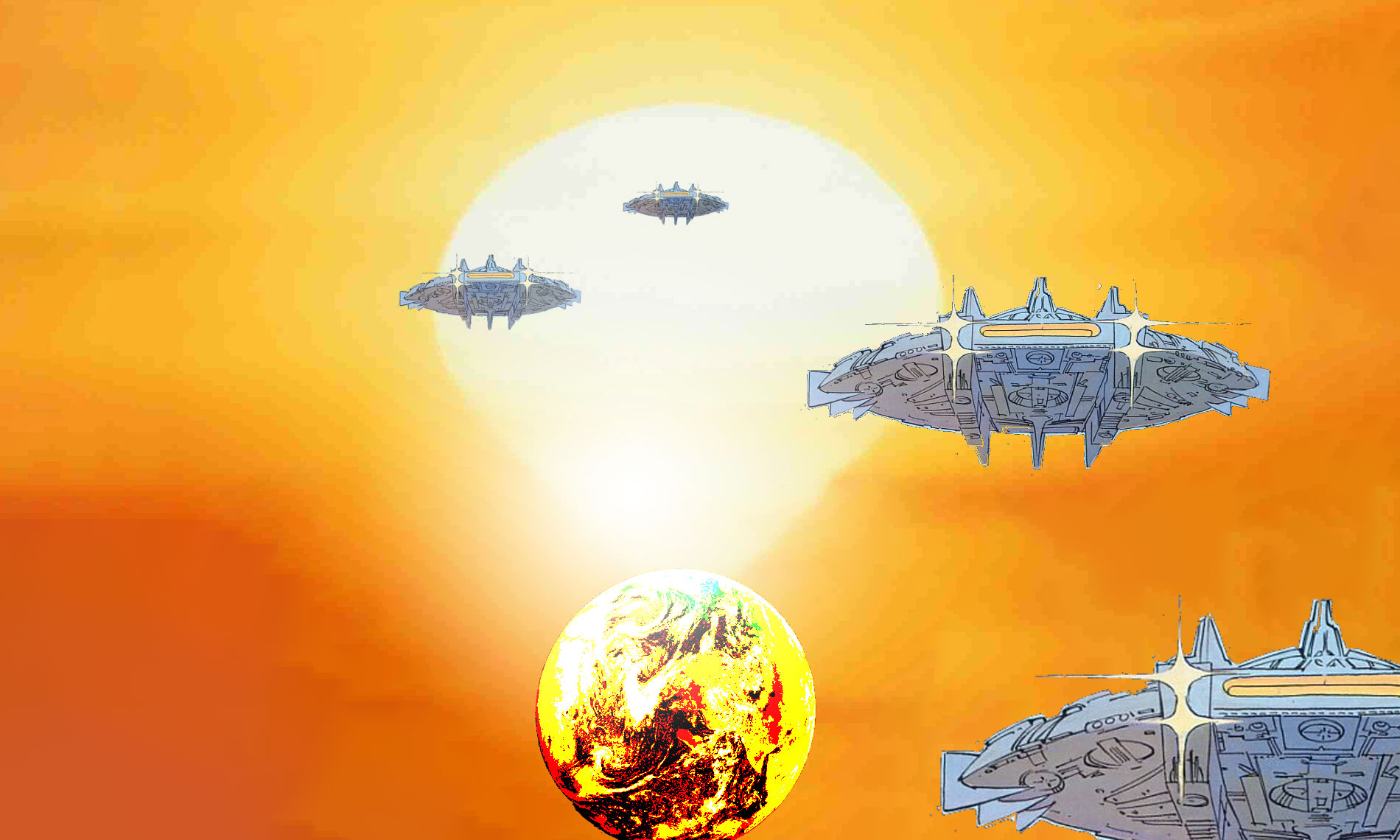
The island in the sky
There’s no objection on my part. My vision matches Plato’s — even though I’m more futuristic than the Greek philosopher. Plato believes in the existence of a polar island that he describes as green and temperate, which the freezing cold absolutely excludes.
In another Dialogue, Plato postulates an island in the sky and a flying temple. If he had associated these facts with Hyperborea as with Atlantis, he was making the economy of the paradox of an Atlantis engulfed in the space of one night, and making the knowledge a prodigious one forward. I reveal what he did not dare to say:
Atlantis was a spacecraft, like Hyperborea.
It went back to space and its takeoff caused a beautiful tsunami on both sides of the Atlantic Ocean. Did its Atlas pilot make a mistake? Or achieved a feat?
The gods came from Hyperborea aboard a mother ship brighter than the sun…
Tilak does not go that far, this idea was inconceivable in our historical vision at the dawn of the 20th century. A century later it still is.
Moreover, it is doubtful that Tilak read Plato. Even today, scholars think quite like Tilak. They would do well to reread the author of the Dialogues, who could give them lessons in modernity.
Motionless sun
Another verse that reinforces my conviction: “The sun dug up its chariot in the middle of heaven. Indra overthrew the strongholds of Pipru, the evil demon.” (source) Rig Veda, X, 138, 3 This evil demon is a particular demon: ancient deva, he became evil. This portrait corresponds to the Archons of Gnosis. The Asuras defeated by Indra are those demons that the Gnosis calls Archons.
The Archons are Reptilians. They belong to the Serpent People, and have no soul. The Goddess did not give them the supra-consciousness, unlike us. The Archons are our masters and yet they die dying with no hope of spiritual survival or reincarnation.
“If you don’t die while you are alive, you will die while dying”
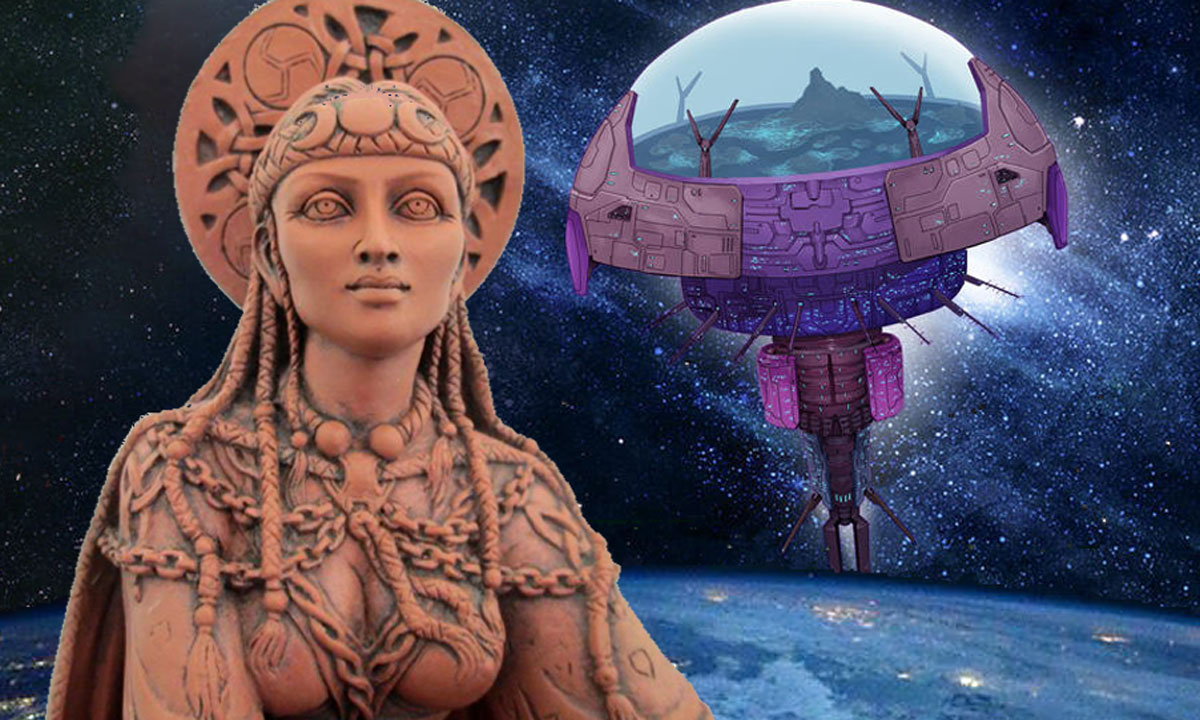
From the Big Dipper
“The sun dug up its chariot in the middle of the heavens.” Tell me how the sun can stop its course in the open sky? For our star, this is impossible. Some authors have evoked an eclipse, but it has nothing to do, eclipses do not stop the sun. The Vedas show astronomical knowledge too advanced for this gross confusion to be possible.
But if it’s a ship, everything makes sense. This refers to the moment when Indra/Hyperborea stalled vertically from the North Pole where he hovered. There is another passage of the Rig Veda signals the sun stop. In VII, 87,5, it is said that King Varuna “made the golden sun swing in the heavens.” It is still Hyperborea. The Bible points to the same fact. The sun stopped at Joshua’s request until his people were avenged. (source)Josué, X, 12, 13
Where did this great ship come from? From the star Alcor in the Big Dipper. I showed it in several articles, I want to give another proof. “The path of the sun crosses regions that lie below the abode of the Seven Rishis”, that is, Ursa Major. (source)Sayce, Introduction to the science of language, vol. II, p. 130
Our Lady of Alcor
The original Goddess is our true mother. If it is said in the Gnosis that the Asuras/Archons made our physical body, it is She, the Goddess, who endowed it with an immortal soul. She is the one who sent her son Indra to India to protect her from the demons of before and help her grow.
Indra is Son of the Sun because he came out of the great ship that can be called Indra’s Sun. This spherical spacecraft came from Alcor, commissioned by the Goddess. So Indra is one of Alcor’s envoys. One of the former gods. One of the Goddess’s servants.
The gods are numerous and very specialized. Each region of the globe has received an emissary from Alcor. Indra is the one who was charged with India, as his name indicates: IND RA, the Sun of India.
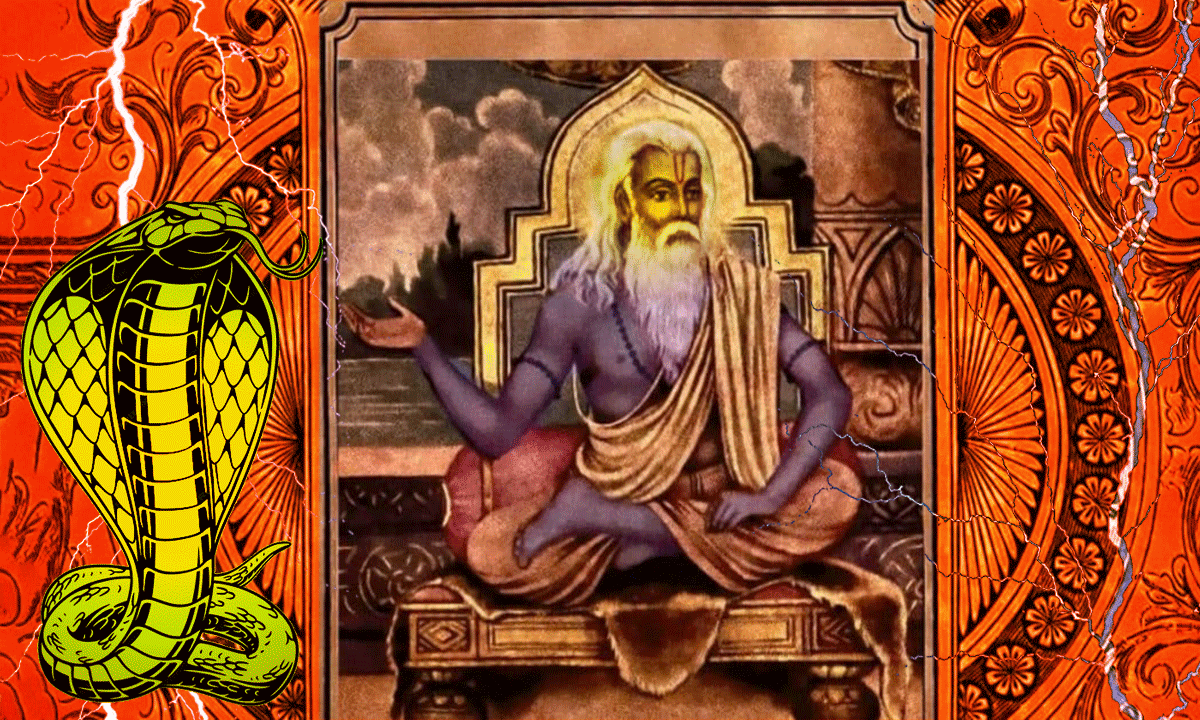
The chariot of the sun
“Herodotus could not believe that the sun rose to the north.” (source) LBG Tilak, The Artic Home in the Vedas, p.131 This is the Sun Undefeated, Hyperborea/ Indra. The same Conquering Sun that will be the nickname of Mithras, who was called Son of God, like Dionysus, like Jesus. We should have said Son of the Goddess.
In the Vedas, Tilak tells us, the north is associated with the upper adjective. The Hindu scholar gets lost in convoluted explanations, the truth is simpler. Upper North is in Sanskrit the exact translation of the Greek Hyperborea.
“And now we see the sun in its great and powerful chariot” (source)LBG Tilak, The Artic Home in the Vedas, p.164
Why does the sun need a chariot? The same image is found in Greek mythology about Apollo driving the chariot of the sun. One day he entrusted the reins to his son Phaeton, who caused an accident because he could not hold the horses. We can see that it is not our star, but another sun much closer to the earth, a great light that the god can move at will, and that can even take its course through space to Alcor.
Waiting for the dawn …
“The idea that the sun falls from the sky is widespread in sacrificial literature. Thus we read: ‘The gods, afraid to see the sun upside down after its fall beyond themselves, placed above it the highest worlds to support it.” (source)LBG Tilak, The Artic Home in the Vedas, p.166
These highest worlds, let us not doubt, are those of the seven Rishis, the seven stars of the constellation of Ursa Major, the Great Dipper. Of course, Hyperborea did not remain permanently above the north pole of our planet. It moved in the sky, sometimes immobilizing, and other times losing its seat, as described by the myth of Phaeton. (See above)
He also used to travel through outer space to return to Alcor, or for another mission to Orion, the Pleiades or Sirius. Then night fell on the land deprived of its Great Light. The pale glow of the “normal” sun seemed like a kind of night compared to the hyper luminous brightness of Hyperborea.
“When the sun was not seen at night, it was because it had disappeared in the upper regions of the heavens” (source)LBG Tilak, The Artic Home in the Vedas, p.220
Thank you, Mr. Tilak. I couldn’t have said it better. The Hindu scholar insists a lot on waiting for the day, which he puts on the account of different alternating day – night under the poles: a six-month day followed by a six-month night. The Vedic literature describes the weeping and gnashing of the teeth of the seers and priests, begging all the gods for the sun to return as soon as possible.
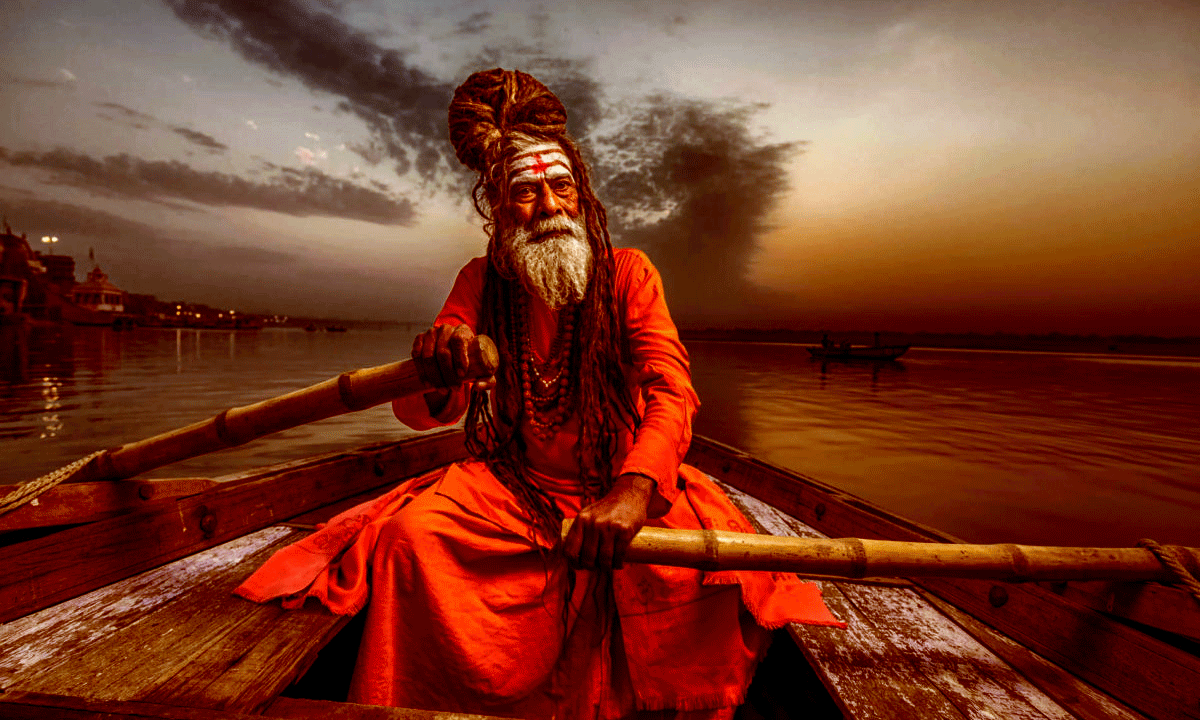
Indra is back!
This is incompatible with the astronomical wisdom and knowledge of the ancient inhabitants of the polar region. They knew perfectly well when the dawn would return: six months after the disappearance of the sun. But that dawn did not interest them too much. What they were waiting for without knowing when he would return was the mother ship of Grand Indra. Hence their inconsolable sadness and anguished prayers. Without the gods, without their light, life on Earth looked like hell.
Prof Max Muller puts a good layer on it. The whole theogony and philosophy of the old world is centered on the dawn, mother of the luminous gods, of the sun in its various aspects, the brilliant dawn image and face of immortality” (source)Prof Max Muller, Lectures on the science of language
The dawn, in fact, is the great joy of the return of the gods of Alcor to the face shining like that of Apollo, Lugh and all the Sons of the Sun. Thanks to his great scientists for giving me such valuable arguments! They would have been very surprised to see the use I make of them. I would never have had the patience to go through all this literature. They did it for me, so I will summarize them for you. Don’t thank me, it’s my pleasure.
Hyperborea
- From Atlantis To Hyperborea
- Hyperborea In The Sky
- Ouroboros
- Wandering Planet Nibiru
- The Truth About Nibiru
- “The Gods Came From Hyperborea”
- Ubiquitous Hyperborea
- Remember Hyperborea
- Solar Arch
- Merkaba
- The Flying Island
Sons of the Sun
- Sons of the Sun
- Phaeton Son Of The Sun
- Mitra the Elder
- Mithras Sol Invictus
- Undefeated Sun
- Mithras Son Of God
- Christianism and Mithraism
- The End Of Taurus
- The Ivesus Songs
- The Fifth Sun Of The Maya
- Heliogabalus Silly Bouddha
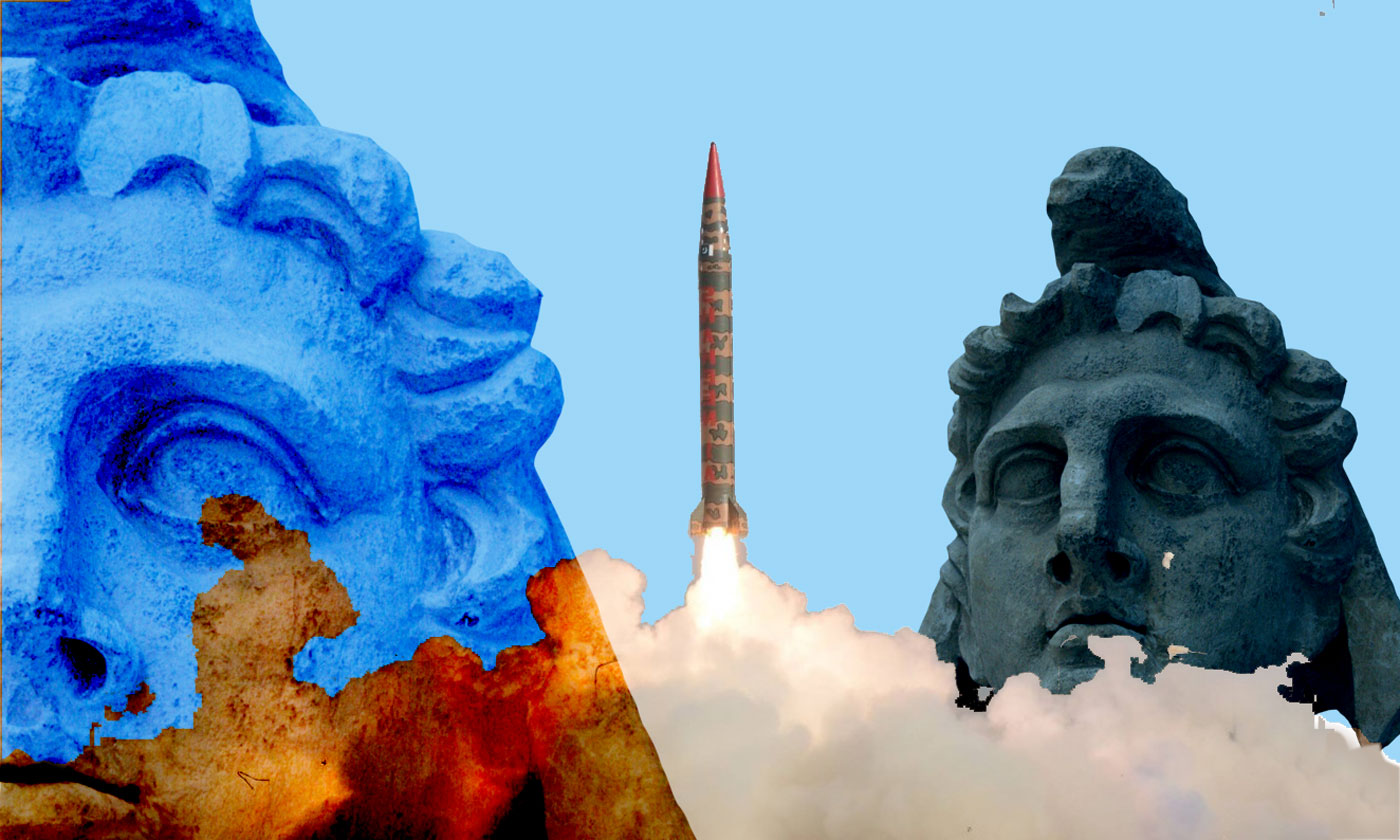 Mitra, Varuna and the other Sons of the Sun sometimes crossed interstellar space to return to Alcor
Mitra, Varuna and the other Sons of the Sun sometimes crossed interstellar space to return to Alcor


